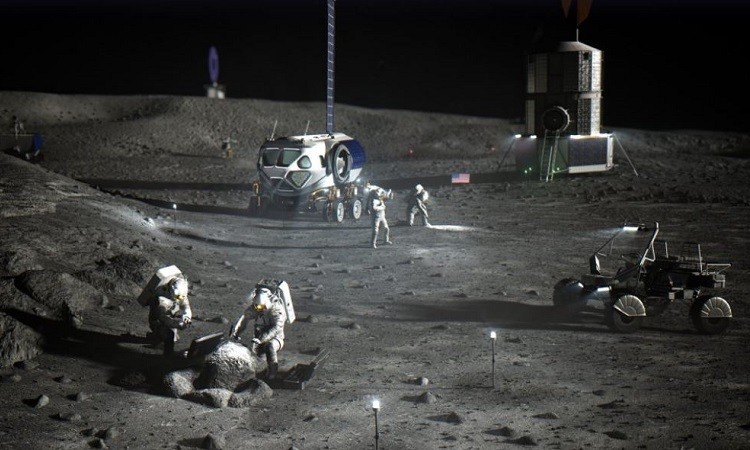
Laurel, Maryland - The Johns Hopkins Applied Physics Laboratory (APL) is harnessing its lunar science and technology prowess to contribute to a groundbreaking initiative by the Defense Advanced Research Projects Agency (DARPA). Their mission: to define and advocate for interoperability standards crucial for the blossoming commercial lunar infrastructure.
Leading the charge, APL will oversee and provide technical guidance for the Lunar Operating Guidelines for Infrastructure Consortium (LOGIC). This consortium, a brainchild of DARPA, aspires to assemble key players from the realms of industry, academia, and government. Their collective objective? Identifying the indispensable lunar infrastructure interoperability requirements and interfaces. LOGIC will also actively foster the lunar community's efforts to construct operational protocols, effectively bridging the gap in interoperability.
Collaborating closely with NASA's Lunar Surface Innovation Initiative (LSII) and Lunar Surface Innovation Consortium (LSIC), LOGIC endeavors to expedite the creation of consensus-driven interoperability standards in pivotal areas, including power distribution, communications, positioning, navigation, timing, lunar surface surveying, and the control of cislunar space traffic. It's worth noting that APL administers LSIC and LSII in partnership with NASA's Space Technology Mission Directorate, fostering the participation of numerous universities and businesses in NASA's Artemis lunar exploration program.
Bobby Braun, Head of APL's Space Exploration Sector, expressed his enthusiasm for the project: "We take pride in supporting DARPA and NASA as they work toward their integrated objectives in the cislunar domain. Whether it's driven by scientific, security, or economic motives, APL has long been dedicated to advancing cislunar technology. We are thrilled to leverage our team's capabilities for the benefit of our nation."
DARPA has recently initiated its 10-Year Lunar Architecture (LunA-10) capability study, an effort designed to ignite the development of a civil lunar framework for the peaceful use of the United States and international stakeholders. The initiative is focused on rapidly generating foundational technological concepts that move beyond individual endeavors, instead, cultivating a set of adaptable systems that can interconnect and create monetizable services for future lunar endeavors.
DARPA and NASA are collaborating closely to harness the expertise of the LSII and LSIC communities, capitalizing on decades of operational experience. Through LOGIC, APL will oversee specialized working groups concentrating on the benefits of standardization and modular components, assessing the potential influence of new technologies on the broader space community, and crafting community-endorsed strategies to close interoperability gaps.
Director of LSIC, Jamie Porter, emphasized the synergy between LOGIC and the LSIC teams, highlighting the extensive potential for collaboration within these communities.
Gaganyaan: ISRO Gears Up for Human-Based Mission: Crew Escape System Test
NASA Reveals Material Extracted from the Surface of Near-Earth Asteroid Bennu